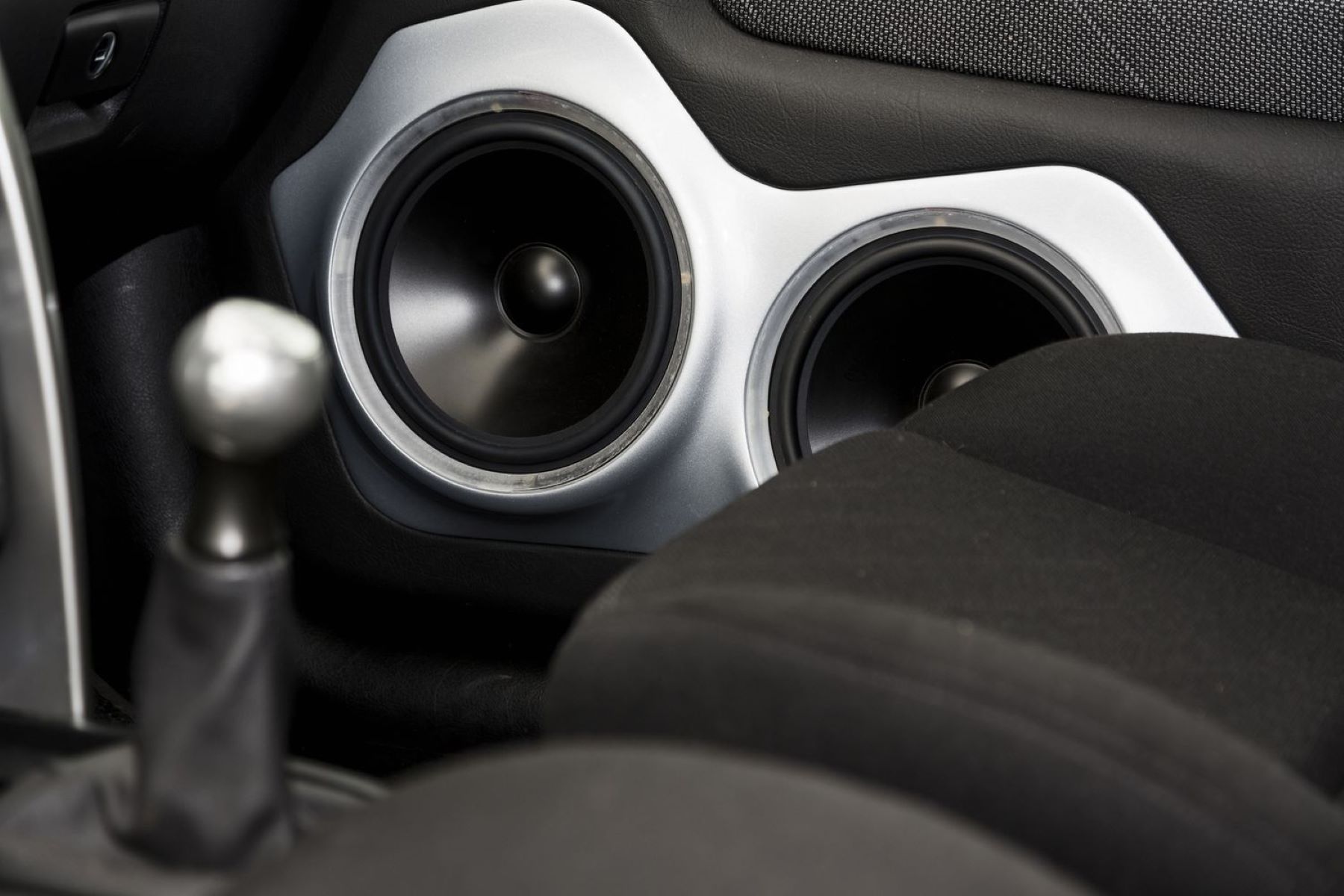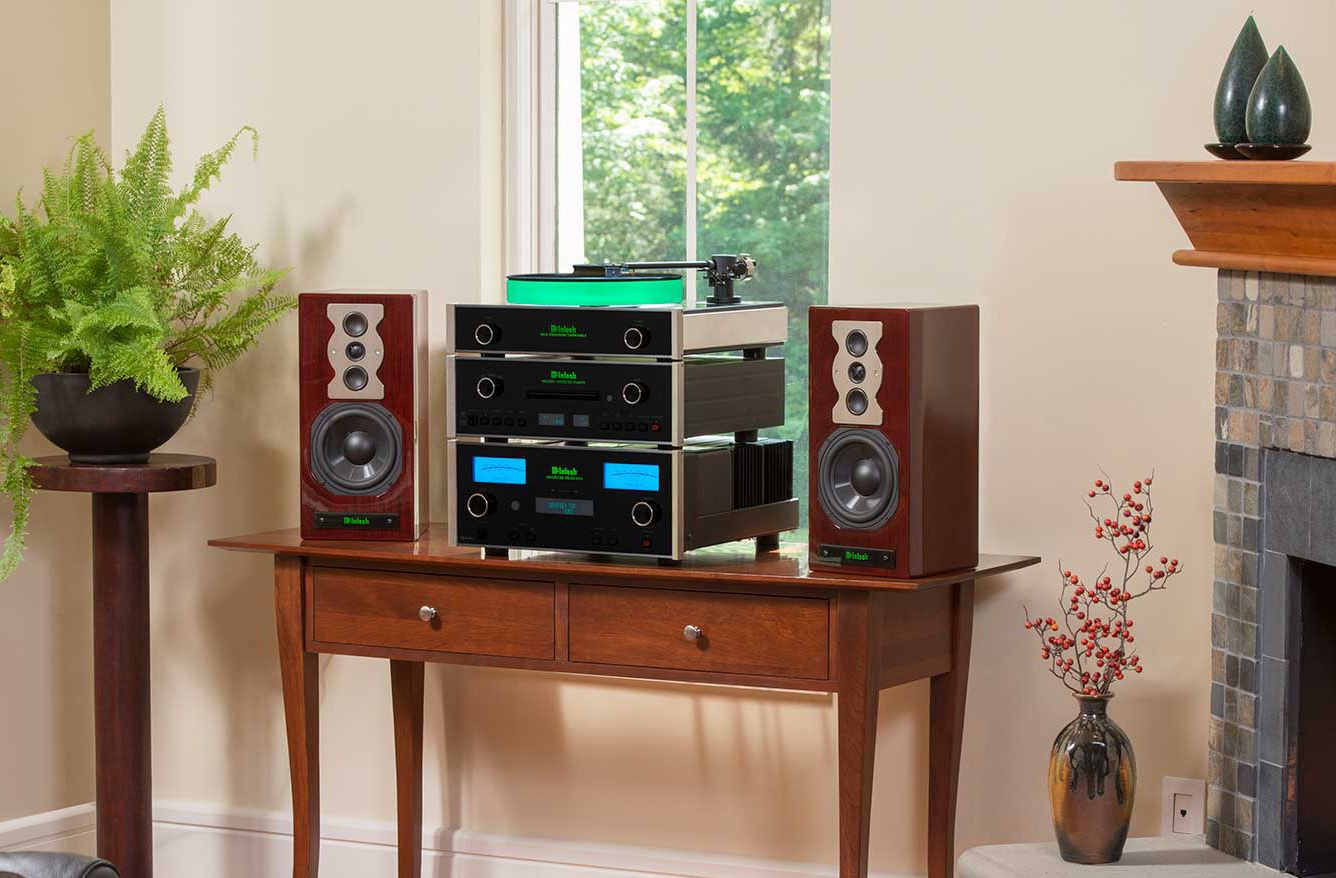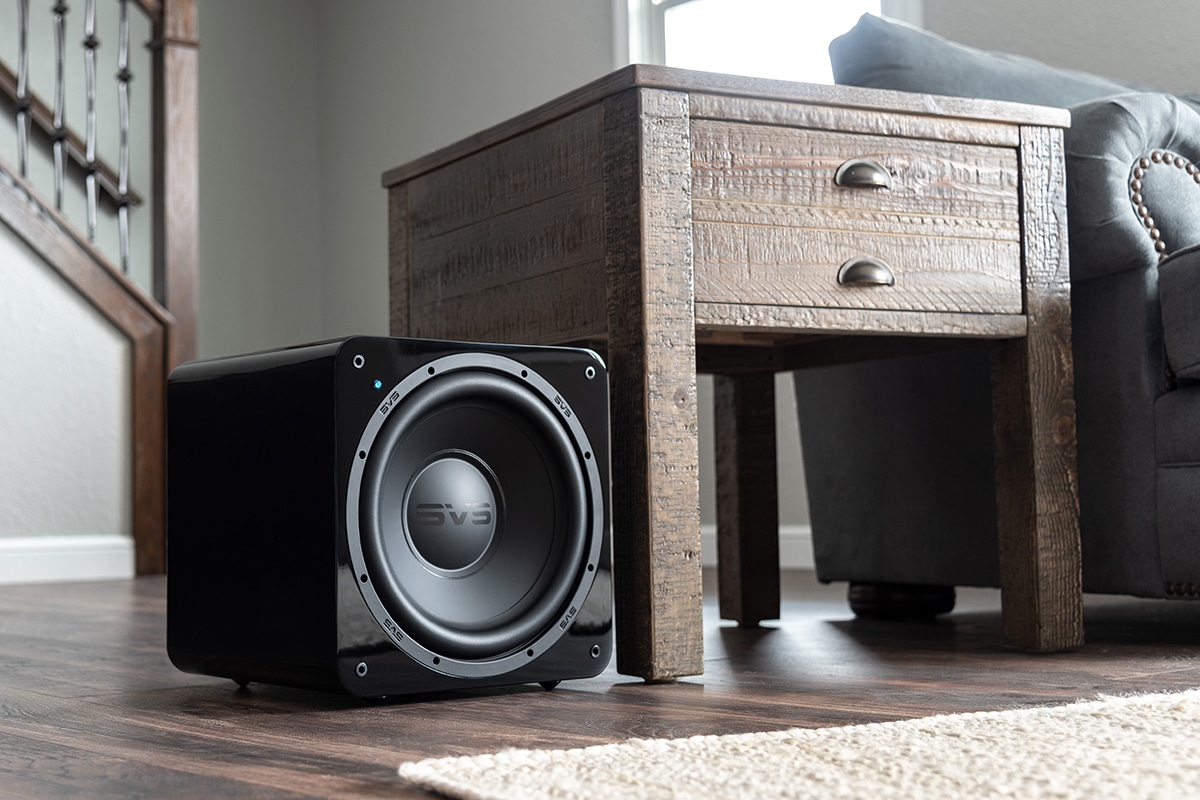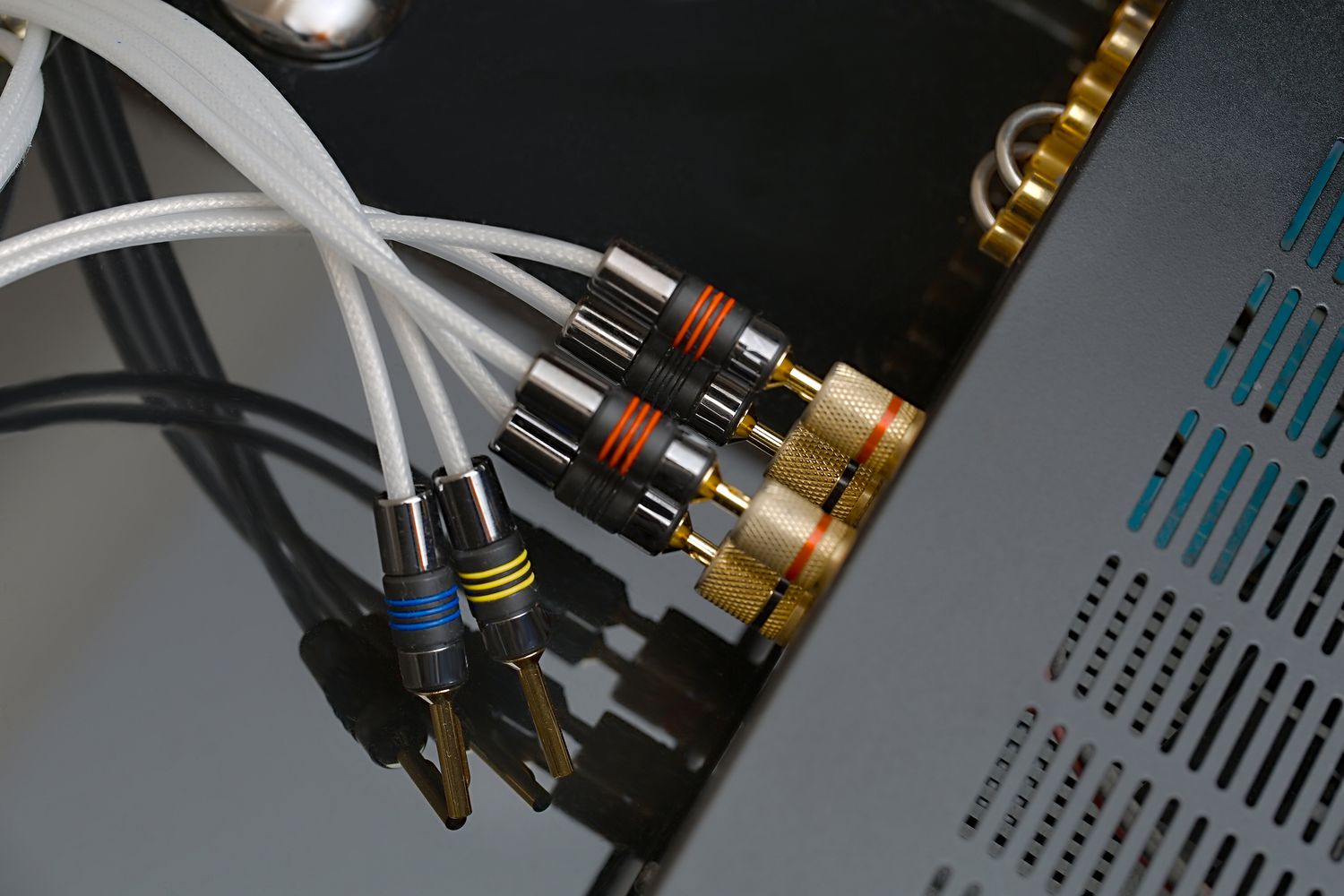Home>Devices & Equipment>Subwoofer>How To Turn A Speaker Into A Subwoofer


Subwoofer
How To Turn A Speaker Into A Subwoofer
Published: January 22, 2024
Learn how to transform a regular speaker into a powerful subwoofer for enhanced bass performance. Take your audio experience to the next level with this step-by-step guide.
(Many of the links in this article redirect to a specific reviewed product. Your purchase of these products through affiliate links helps to generate commission for AudioLover.com, at no extra cost. Learn more)
Table of Contents
Introduction
When it comes to audio equipment, subwoofers are an essential component for music lovers and audiophiles alike. They add depth, power, and richness to the sound, allowing you to truly feel the bass. While there are many pre-made subwoofers available on the market, you may be surprised to learn that you can actually convert a regular speaker into a subwoofer.
Converting a speaker into a subwoofer is a great option if you’re looking to save some money or if you have an old speaker lying around that you want to repurpose. It’s important to note that not all speakers can be easily converted, as subwoofers require specific features and capabilities to produce low-frequency sounds effectively. However, with the right knowledge and a little bit of tweaking, you can turn a regular speaker into a subwoofer and enjoy deep, booming bass.
In this article, we’ll explore the step-by-step process of converting a speaker into a subwoofer. We’ll discuss the key differences between speakers and subwoofers, the necessary modifications you’ll need to make, and the techniques for enhancing the bass response. By the end, you’ll have a clear understanding of how to harness the power of a subwoofer from a regular speaker.
Understanding Speakers and Subwoofers
Before diving into the process of converting a speaker into a subwoofer, it’s important to understand the differences between the two and why subwoofers are necessary for deep bass reproduction.
A speaker is a device that converts electrical signals into sound waves. It consists of a cone or diaphragm that vibrates in response to the electrical signals, producing sound waves that we can hear. Speakers are designed to cover a wide range of frequencies, including mid-range and high frequencies. However, when it comes to low frequencies, speakers often struggle to reproduce them accurately.
This is where a subwoofer comes into play. A subwoofer is a specialized speaker designed specifically for handling low-frequency sounds, commonly referred to as bass. These sounds typically range from 20 Hz to 120 Hz, which is lower than what regular speakers can effectively reproduce. Subwoofers are larger in size and have a dedicated amplifier to provide the necessary power to produce deep, resonant bass.
The reason subwoofers are necessary for accurate bass reproduction lies in their design. They are built with larger drivers, known as woofers, which are capable of moving more air and producing lower frequencies. Additionally, subwoofers are typically housed in specially designed enclosures that maximize the efficiency and performance of the low-frequency output.
By incorporating a subwoofer into your audio system, you can achieve a balanced and immersive sound experience. The subwoofer takes over the responsibility of reproducing the low-frequency sounds, allowing the other speakers to focus on mid-range and high frequencies. This separation of frequencies results in cleaner, more precise sound reproduction and enhances the overall quality of your audio.
Now that we have a basic understanding of speakers and subwoofers, let’s explore the step-by-step process of converting a regular speaker into a subwoofer.
Speaker to Subwoofer Conversion: Overview
Converting a speaker into a subwoofer involves several key steps to ensure optimal performance and bass output. Here’s an overview of the conversion process:
- Selecting the Right Speaker: Not all speakers are suitable for conversion. It’s important to choose a speaker with a large driver and a sturdy enclosure to handle the demands of low-frequency reproduction.
- Modifying the Speaker Enclosure: The speaker enclosure plays a crucial role in a subwoofer’s performance. By making certain modifications, such as sealing air leaks and optimizing internal volume, you can improve the bass response of the converted speaker.
- Enhancing the Bass Response: To achieve deep and powerful bass, you’ll need to implement techniques like adding damping material inside the enclosure, using a ported or sealed design, and adjusting the speaker’s frequency response through equalization.
- Wiring and Amplification: Subwoofers require a dedicated amplifier to provide sufficient power. You’ll need to properly wire the speaker to the amplifier, ensuring a secure and efficient connection.
- Fine-Tuning and Testing: Once the conversion is complete, it’s important to fine-tune the subwoofer’s settings and test its performance. This involves adjusting crossover frequencies, phase alignment, and volume levels to achieve the desired bass response.
Throughout the conversion process, it’s important to keep in mind that the performance of a converted speaker will not match that of a dedicated subwoofer. However, with careful attention to detail and proper implementation of techniques, you can still achieve satisfying bass output and enhance your audio experience.
In the following sections, we will delve deeper into each step of the conversion process, providing detailed instructions and tips to help you successfully convert a speaker into a subwoofer.
Step 1: Selecting the Right Speaker
Choosing the right speaker is crucial for a successful speaker-to-subwoofer conversion. Not all speakers are suitable for handling low frequencies effectively. When selecting a speaker, keep the following factors in mind:
- Driver Size: Look for a speaker with a large driver size, typically between 8 to 15 inches. Larger drivers can move more air, resulting in better bass reproduction.
- Enclosure Design: Opt for a speaker with a sturdy and well-designed enclosure. A solid enclosure will prevent unwanted vibrations and resonances, ensuring cleaner and more accurate bass output.
- Power Handling: Consider the speaker’s power handling capabilities. Since subwoofers require more power than regular speakers, choose a speaker that can handle higher wattage to prevent distortion and damage.
- Frequency Response: Look for speakers with a wide frequency response range, particularly on the lower end. Speakers with a lower frequency response (around 40 Hz or lower) are better suited for subwoofer conversion.
- Compatibility: Ensure that the speaker is compatible with the desired amplifier and crossover system. Check the specifications of both the speaker and amplifier to ensure they are a good match.
Keep in mind that the speaker you choose will determine the overall performance and potential of your converted subwoofer. Remember, while a converted speaker can produce satisfying bass, it may not match the performance of a dedicated subwoofer. However, with careful consideration and selection, you can still achieve impressive results.
Once you have chosen the right speaker, you can proceed to the next step in the conversion process: modifying the speaker enclosure.
Step 2: Modifying the Speaker Enclosure
The speaker enclosure plays a critical role in the performance of a subwoofer. Modifying the speaker enclosure will help optimize its ability to produce deep and powerful bass. Here are some modifications to consider:
- Sealing Air Leaks: One of the first steps in modifying the enclosure is to ensure that it is airtight. This can be achieved by sealing any air leaks using silicone caulk or weatherstripping tape. Airtight enclosures prevent unwanted air vibrations and ensure cleaner bass output.
- Internal Volume: The size of the enclosure affects the bass response. It’s important to match the volume of the enclosure to the specifications of the speaker. Ideally, the internal volume should be within the recommended range provided by the manufacturer.
- Damping Material: Adding damping material inside the enclosure helps reduce resonance and improves bass performance. Materials like acoustic foam or polyfill can be used to absorb excess sound waves and prevent them from interfering with the desired bass output.
- Ported or Sealed Design: Depending on your preferences and the characteristics of the speaker, you can choose between a ported or sealed enclosure design. A ported design uses a vent or port to enhance low-frequency response, while a sealed design provides tighter and more controlled bass.
- Additional Reinforcements: Reinforcing the speaker enclosure with bracing or additional material can help minimize unwanted vibrations and resonances. This results in a cleaner and more accurate bass response.
It’s important to note that the specific modifications required for your speaker enclosure may vary depending on the speaker and your desired sound preferences. Take the time to research and experiment to find the best configuration for your converted subwoofer.
Once you have modified the speaker enclosure, the next step is to focus on enhancing the bass response by implementing specific techniques. We’ll cover this in the next section.
Step 3: Enhancing the Bass Response
Enhancing the bass response is a crucial step in converting a speaker into a subwoofer. The following techniques can help you achieve deep, powerful bass:
- Damping Material: In addition to the damping material inside the enclosure, you can also strategically place it around the speaker cone to further control vibrations and resonances. Experiment with different placements to find the optimal configuration.
- Adjust Frequency Response: Equalization (EQ) can be used to adjust the frequency response of the converted speaker. This allows you to boost or cut specific frequency ranges to achieve a desired bass response.
- Ported or Sealed Configuration: Depending on the design of your speaker enclosure, you may choose to optimize it for a ported or sealed configuration. Ported enclosures provide more output at lower frequencies, while sealed enclosures offer tighter and more controlled bass.
- Use a Crossover: A crossover is a device that filters the audio signal and directs specific frequency ranges to different speakers or subwoofers. Implementing a crossover ensures that only the low-frequency signals are sent to your converted speaker, allowing it to focus on producing deep bass without interference from other frequencies.
- Amplifier Power: Make sure your amplifier is capable of providing sufficient power for your converted subwoofer. A well-powered amplifier ensures that the speaker has enough power to reproduce bass accurately and with authority.
It’s important to note that fine-tuning the bass response may require some trial and error. Experiment with different techniques and configurations to achieve the desired sound quality and bass output. Trust your ears and make adjustments as needed.
Now that you have enhanced the bass response of your converted speaker, it’s time to move on to the next step: wiring and amplification.
Step 4: Wiring and Amplification
Wiring and amplification are crucial steps in the process of converting a speaker into a subwoofer. Here’s what you need to consider:
- Wiring: Connect the speaker to the amplifier using the appropriate wiring. Make sure to use wiring that can handle the power requirements of your subwoofer. Proper wiring ensures a secure and efficient connection.
- Amplifier Selection: Choose an amplifier that is compatible with your speaker and can provide sufficient power. Look for an amplifier that is specifically designed for subwoofers, as they often have built-in features tailored for low-frequency reproduction.
- Amplifier Settings: Set the amplifier’s controls and settings according to the specifications of your speaker and personal preferences. Adjust the gain, crossover frequency, and phase settings to optimize the performance and integration of the subwoofer with the rest of your audio system.
- Positioning: Consider the placement of your subwoofer within your listening space. Experiment with different locations to find the spot that provides the best bass response and integration with your other speakers. Proper placement can greatly enhance the overall sound experience.
Ensure that all connections are secure and wires are neatly organized to avoid any interference or signal loss. Take the time to read the manuals provided with your speaker, amplifier, and any other equipment to ensure proper installation and setup.
Once you have wired and connected your subwoofer, it’s time to move on to the final step: fine-tuning and testing the performance to achieve the desired bass output.
Step 5: Fine-Tuning and Testing
After converting a speaker into a subwoofer and completing the necessary modifications, it’s important to fine-tune and test the performance to ensure optimal bass output. Here are some key steps to follow:
- Crossover Settings: Adjust the crossover frequency on your amplifier or crossover device. This determines the point at which the low-frequency signals are directed to the subwoofer. Fine-tuning the crossover ensures a seamless integration between the subwoofer and the other speakers in your system.
- Phase Alignment: Experiment with the phase settings on your amplifier to achieve the best phase alignment between the subwoofer and other speakers. Correct phase alignment ensures optimal bass response and avoids cancellation or reinforcement issues.
- Volume Level: Adjust the volume level of the subwoofer to blend harmoniously with the rest of your audio system. You want the subwoofer to provide a noticeable bass presence without overpowering the other speakers.
- Listening Test: Play a variety of music tracks or audio content that contains deep bass frequencies. Listen carefully to the performance of the subwoofer and make note of any areas that may need further adjustment. Pay attention to the clarity, depth, and accuracy of the bass reproduction.
- Fine-Tuning: Make small adjustments to the crossover frequency, phase alignment, and volume levels based on your listening tests. Fine-tuning is an ongoing process to achieve the desired bass response and integration within your audio system.
It’s important to take your time during the fine-tuning process and trust your ears. Every room and audio system is unique, so what works in one setup may not work in another. Don’t hesitate to make small adjustments until you achieve the desired sound quality and bass performance.
Remember to periodically retest and readjust your subwoofer’s settings, as factors such as room acoustics and speaker positioning can change over time. Regular maintenance and calibration will ensure that your converted subwoofer continues to deliver optimal bass performance.
With the completion of the fine-tuning and testing process, you have successfully converted a regular speaker into a subwoofer. Enjoy the deep, powerful bass that your converted subwoofer now brings to your audio system!
Conclusion
Converting a regular speaker into a subwoofer is a rewarding project that allows you to enjoy deep, booming bass without the need to purchase a dedicated subwoofer. By following the step-by-step process outlined in this article, you can turn an ordinary speaker into a powerful bass machine.
It’s important to remember that converting a speaker into a subwoofer requires careful consideration and attention to detail. Selecting the right speaker, modifying the enclosure, enhancing the bass response, wiring and amplification, and fine-tuning and testing are crucial steps to achieve optimal results.
Throughout the conversion process, be patient and willing to experiment. Fine-tuning the bass response and integration with your audio system may take some time, but the end result will be worth it. With proper adjustments and careful listening, you can achieve deep and powerful bass that enhances your overall audio experience.
Keep in mind that while a converted speaker can produce satisfying bass, it may not match the performance of a dedicated subwoofer. However, with proper speaker selection, modifications, and fine-tuning, you can still achieve impressive bass output and enjoy immersive audio.
Whether you’re a music lover, movie enthusiast, or audiophile, converting a speaker into a subwoofer offers a cost-effective and rewarding way to enhance your audio system. So grab your tools, select the right equipment, and dive into the world of DIY subwoofer conversion. Get ready to feel the deep bass vibrations and take your audio experience to the next level!











